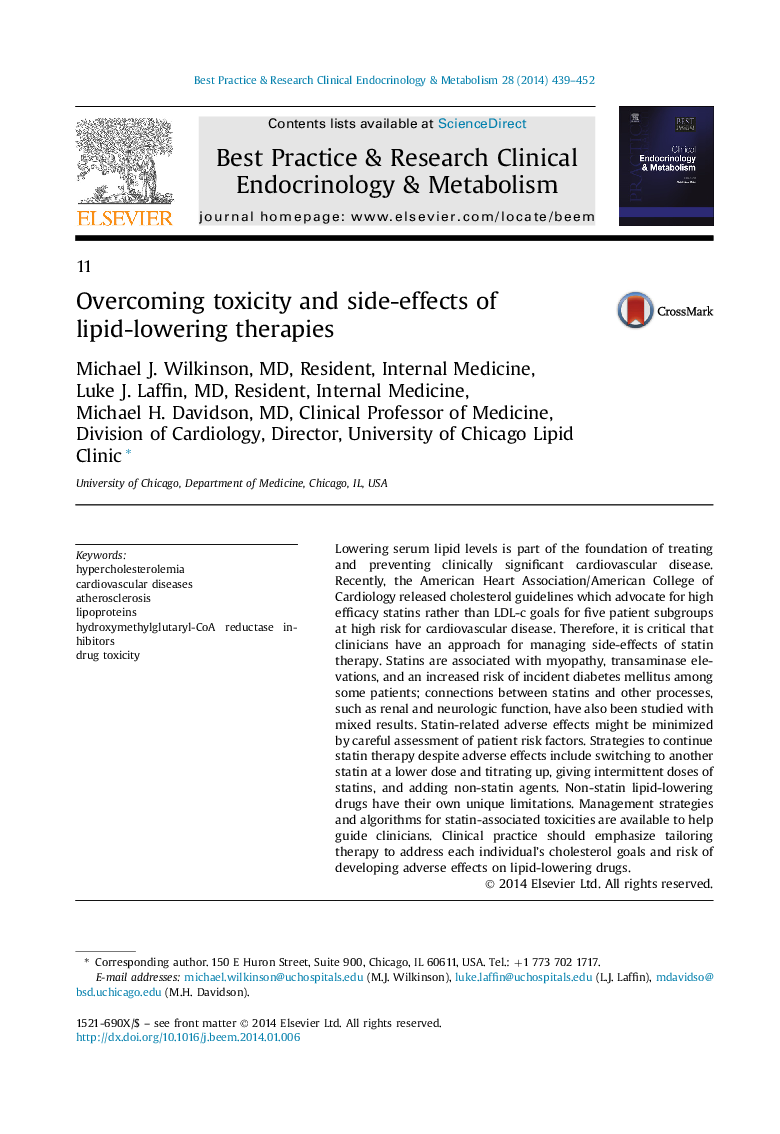| Article ID | Journal | Published Year | Pages | File Type |
|---|---|---|---|---|
| 2791631 | Best Practice & Research Clinical Endocrinology & Metabolism | 2014 | 14 Pages |
Lowering serum lipid levels is part of the foundation of treating and preventing clinically significant cardiovascular disease. Recently, the American Heart Association/American College of Cardiology released cholesterol guidelines which advocate for high efficacy statins rather than LDL-c goals for five patient subgroups at high risk for cardiovascular disease. Therefore, it is critical that clinicians have an approach for managing side-effects of statin therapy. Statins are associated with myopathy, transaminase elevations, and an increased risk of incident diabetes mellitus among some patients; connections between statins and other processes, such as renal and neurologic function, have also been studied with mixed results. Statin-related adverse effects might be minimized by careful assessment of patient risk factors. Strategies to continue statin therapy despite adverse effects include switching to another statin at a lower dose and titrating up, giving intermittent doses of statins, and adding non-statin agents. Non-statin lipid-lowering drugs have their own unique limitations. Management strategies and algorithms for statin-associated toxicities are available to help guide clinicians. Clinical practice should emphasize tailoring therapy to address each individual's cholesterol goals and risk of developing adverse effects on lipid-lowering drugs.
